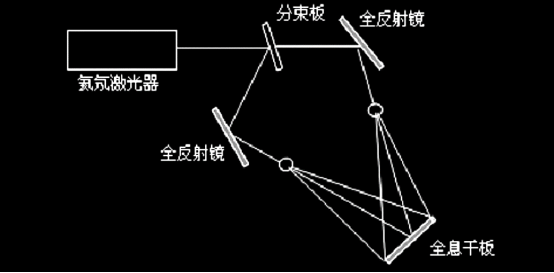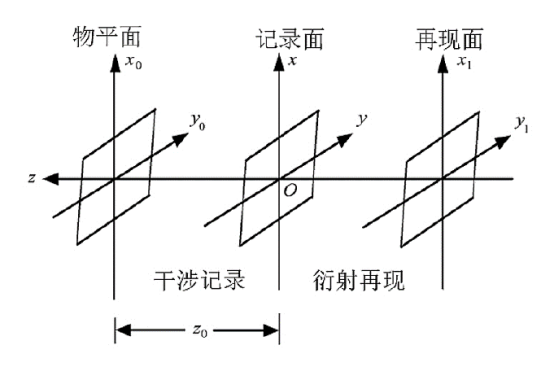The application of holographic, AI and virtual technology in studio - Dr. George
2021-08-03
Abstract: With the rapid development of electronic information technology, holographic projection technology as a new three-dimensional imaging technology has been more and more widely used in different industries. Different from the previous projection technology, the use of holographic projection technology, the human eye can directly see three-dimensional images in space. This paper introduces in detail the basic principle of holographic projection technology, combined with the specific process of holographic projection light path structure are introduced, analysis of the holographic projection technology compared with advantages and disadvantages compared with other 3 d display technology, discussed the key technology of the holographic projection, combined with holographic projection technology in areas such as film and television has carried on the detailed introduction, The bottleneck of the development of holographic projection technology is analyzed, and the development and future of holographic projection technology are prospected.
Key words: holographic projection; Three-dimensional image; Application prospect
0 the introduction
Holographic projection technology is essentially a new type of 3D imaging technology, which uses the principle of interference recording and diffraction reproduction to restore the real 3D image of an object. With the continuous development of holographic projection technology, it has been widely used in many fields of various industries, bringing great changes to our life and making our world more wonderful.
In 1947, British physicist Dennis Gabor invented holographic projection technology, and in 1962 Soviet scientists obtained the first optical three-dimensional holographic projection. In 1967, Goodman put forward the concept of digital holography. Photoelectric conversion devices such as CCD or CMOS replace the silver salt plate to record the interfered hologram. Holographic reproduction of objects is realized by computer simulation of diffraction process. Although holographic projection has existed for a long time, it has been difficult to get commercial application due to the limitation of recording and reproducing media. In the 21st century, the appearance and wider application of medium with excellent performance have greatly promoted the development of holographic projection technology.
This paper introduces in detail the basic principle of holographic projection technology, combined with the specific process of holographic projection light path structure are introduced, and based on the analysis of the holographic projection technology compared with advantages and disadvantages compared with other 3 d display technology, combined with holographic projection technology in areas such as film and television has carried on the detailed introduction, analysis of the current bottleneck in the development of the holographic projection technology, The development and future of holographic projection technology are prospected. It has positive significance for the development of holographic projection technology.
1 Basic Principles
By recording the object light wave carrying the three-dimensional information of the object and restoring the wavefront information of the object, the original three-dimensional imaging of the recorded object can be achieved. Holographic projection technology is a technique that uses the principle of light interference and diffraction to record the information of recorded samples in the form of interference fringes and restore the recorded samples by reproducing the recording medium of light irradiation. The core principles include two processes: interference recording and diffraction reproduction.
1.1 Interference Record
Firstly, the interference principle is used for recording, splitting the light source into two parts, one beam of light irradiates the object to obtain reflected or scattered object light wave, and the other part of the light source is used as reference light wave to illuminate the recording medium. The two beams of light interfere and form a series of alternating light and dark stripes. After developing, fixing and other processing procedures, the recording stripe medium becomes a hologram. For digital holography, the recording medium is replaced by photoelectric sensors such as CCD and CMOS.
The recording procedure expression is as follows:
The setting object light and reference light are respectively
O(x,y),R(x,y),
O(x,y)=o(x,y)exp[jφ(x,y)] (1)
R(x,y)=r(x,y)exp[jφ(x,y)] (2)
The interferometric hologram H(x, y) is shown as follows:
H(x,y)=|O(x,y)+R(x,y)|2
=|O(x,y)|2+|R(x,y)|2+R*(x,y)O(x,y)+R(x,y)O*(x,y)
=|O(x,y)|2+|R(x,y)|2+2r(x,y)o(x,y)cos[φ(x,y)-φ(x,y)] (3)

Figure 1. Schematic diagram of holographic projection
1.2 Diffraction Reproduction
Diffraction reproduction is realized by reproducing light wave irradiation recording medium: hologram is a series of bright and dark fringe, when the reproducing light wave irradiation, will produce a pair of twin images, which are reproducing image and conjugate image respectively. The reconstructed image has a highly realistic three-dimensional feeling. The resulting process is as follows:
Reproduction process: another beam of reference light is used to illuminate the hologram, and the original object light wave information can be obtained.
U(x, y)=R(x, y)H(x, y)
=R(O 2+R 2)+R 2 O+R 2 O* (4)
In the above equation, the first term is a zero-order diffraction term, which occupies the main energy and is a interference term. The second term and the third term are twins of order +1 and order -1, respectively. The diffraction term of order +1 is an accurate representation of the light wave of the original object except for the constant factor.


Figure 2. Schematic diagram of holographic recording and reproduction process
2. Comparison of advantages and disadvantages
In recent years, the development of digital holographic display technology has provided a new platform for THREE-DIMENSIONAL display, in which VR, AR, MR are also widely used THREE-DIMENSIONAL display technology, the following is a specific comparison.
Virtual Reality, or VR for short, is called Virtual Reality. Through computer simulation to generate a three-dimensional virtual world, including visual, auditory, tactile and other sensory simulation, so that users are immersive, interactive in the virtual world. In VR system, binocular stereo vision plays a big role. The different images seen by the user's two eyes are generated separately and displayed on different monitors.
Augmented Reality (AR) aims to superposition the virtual world and the real world. With the real world as the main body, Augmented Reality obtains the position of the real world through the camera and performs image processing to obtain the superposition interaction between the two.
MR, Mixed Reality, is a kind of combination of real scene and virtual scene in a very natural way. It can also be seen as a part of augmented Reality. However, it is difficult to distinguish which is real and which is virtual.
To put it simply, virtual reality (VR) is a completely fake world created by computers, while augmented reality (AR) is a real and fake world. Both virtual reality and augmented reality are based on the principle of binocular stereovision, so that the left eye and the right eye do not interfere with each other to see different images, and then the two in the brain to synthesize stereoscopic images. However, holographic projection is the recorded object light wave information, which can realize the reproduction of real three-dimensional information. Stereo images can also be seen through monocular, so it has a more immersive feeling compared with the former. Holographic projection technology does not need to wear any hardware to see the real object three-dimensional information. Holograms can be used in film projection. Today, holographic projection has become a very popular multimedia projection technology in the market. The influence of holography on traditional movies is very great. When viewers watch hologram movies, the first thing they experience is the sense of being on the scene. Holography is a glasses-free 3D projection technology, so if you watch a hologram movie in different locations, you will see nothing different from reality.

3 application
Holographic projection technology can observe 3d information more intuitively and has been widely used in biomedicine. 1987, Onural and Scott improved digital holography reconstruction algorithm, and applied to the particle measurement, gradual development, it can be used for the observation of sample (quantitative and qualitative analysis, is used to record the cell division, fusion and other dynamic process, including a prominent advantage of digital holographic microscopy is its dynamic characteristic.
The holographic 3d imaging technology has been developed for many years and has been widely used. Holographic projection technology can realize the combination of real and virtual environment, real people and virtual people to cooperate to complete the performance. The 2015 Spring Festival Gala program shu Embroidery uses holographic projection technology. In the center of the stage, a holographic film with an inclination of 45° is placed to play the role of diffraction reproduction. After the intervention recording process in the early stage and the special effect processing in the later stage, the three-dimensional image is precisely coordinated in the performance process, so that the magnificent visual effect in the performance can appear. But this is not a holographic projection technology in a complete sense, because the image obtained through the holographic film is still not a complete sense of three-dimensional objects, projection media is still a problem.
4 summarizes
This paper introduces the basic principle and optical path structure of holographic projection technology, analyzes the advantages and disadvantages of holographic projection technology compared with other 3D display technology, and discusses the key technologies of holographic projection. Holographic projection technology is a 3d imaging technology with great development potential. You can do 3-d imaging with the naked eye, and you can get a much more immersive feel. At present, holographic projection technology is still far from large-scale commercial application, for the following reasons :(1) the holographic imaging process is quite complex, the production cost is high, and the cost of projection recording media and reproduction media are very expensive. (2) The imaging of holographic projection is still limited by the site and is easily affected by the surrounding environment. However, with the continuous improvement of technology, it is only a matter of time before the appearance of holographic projection media and reproduction media with excellent performance and higher cost performance. It is believed that in the near future, holographic projection technology can really benefit the ordinary family.
reference
[1] Zhou Wenjing, Yu Yingjie, Chen Mingyi. Optical technique, 2007,33 (6) : 000870-874.
[2] Li M H. Image quality optimization and system realization of digital holography microscopy [D]. Hangzhou: Zhejiang University, 2011. (in Chinese)
[3] Pan Z L. Study on digital holographic microtomography of tiny organisms [D]. Guangzhou: Jinan University, 2016.
[4] Sun Yanlu. New progress of 3D film technology [J]. Modern Film Technology, 2008, (3) : 3-6.
[5] Gao Wufeng. James Cameron and 3D Film Technology [J]. Contemporary Film, 2012, (11) : 48-50.
[6] Yang Dexing, XU Zengqi, Jiang Hongzhen, et al. Optical and precision engineering, 2012,20 (8) : 1789-1795.
[7] HUANG JIAN. Development and application of 3D holographic projection Technology [J]. Performing Arts Technology, 2015, (1) : 45-47.
